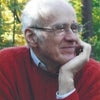
FROZEN PUDDLE
It was an honor to be invited to join the Group for Human Development in Higher Education. I suspect the idea was suggested by my mentor, Nevitt Sanford, editor of The American College (1962). Members of the group included Alexander (Sandy) Astin, a professor at UCLA who was later identified as the most quoted author in the field of higher education, AndrewGreeley, a Catholic priest and a sociologist at the University of Arizona and an associate at the National Opinion Research Center in Chicago, and Joseph Katz, a psychologist at the State University of New York at Stony Brook.
I was very much the junior member, and unlike the others, knew college teaching only as a student and as a teaching assistant (T.A.) in writing (a freshman seminar at my college), in sociology (“American Character and Social Structure”) and in psychology (“personality theory,” at my graduate school).
As members of the group, we met at airport motels, so the hours of discussion were punctuated by planes landing and taking off. When it came time to write our report, “Faculty Development in a Time of Retrenchment,” all eyes turned to the kid in the room, to the one who was presumably least busy, to me. I somehow produced a draft that was half the length of a book. Perhaps because it incorporated enough of the excellent ideas of the senior members, the draft was published without change.
The report was favorably received. It had been supported by several foundations, was published by the press of the leading magazine in the field (Change), and was the topic of an article in the New York Times.
Our goal was the improvement of college teaching. We were working against the ridiculous assumption that training for a doctorate in a discipline was adequate preparation for teaching, against the relentless pressure to “publish or perish,” and against the lack of forums in which professors could learn from each other and from researchers who were discovering what college students needed.
As a T.A. in David Riesman’s course, I had benefitted from weekly dinners during which the staff talked about their teaching: what worked and what didn't. As a T.A. for Nevitt Sanford, I learned from the extensive research on college students done by Sanford and his colleagues.
As George Bonham, the editor of Change, wrote in his foreword to our report, “There is a curious thing about teaching: it is at once the central business in the college world, and yet it is the least talked about. Grumbled about,. yes. But one rarely hears intelligent discussion of it…”
Here is how we began:
“Some critics appear to believe that teaching would improve if only professors drawn astray by the sirens of research, or lulled by the boredom of professional routine, has their classroom performances sharply evaluated. Other critics seem to hope that a new curriculum, style of teaching, form of governance, or more relevant purpose would generate the necessary qualities, as if a new system requiring sensitivity and endurance would necessarily also elicit them.
“These viewpoints suggest a widespread academic reluctance to regard teaching in the same way the profession regards almost every other set of skills—as something that can be taught. In their roles as chemists, literary critics, or psychologists, professors often show painstaking care for method; but with regard to teaching, the academic culture is remarkably unreflective.
“In part this reluctance derives from a dreary record of many educationists who do profess to train teachers, in part from the tendency of every profession to cloak its own processes in mystery as a way to achieve status; and in part from the notion that an academic is valuable for what he knows rather than for what he can help other people learn. .As a result, professors may describe teaching as so straightforward that it requires no special training, and yet as so complex and idiosyncratic that mere training could never meet its extraordinary demand.”
With the help of publicity in Change magazine and in the New York Times, this report led to “faculty development” gigs at various colleges, and to the founding of training centers for faculty, an activity continuing 42 years later.
